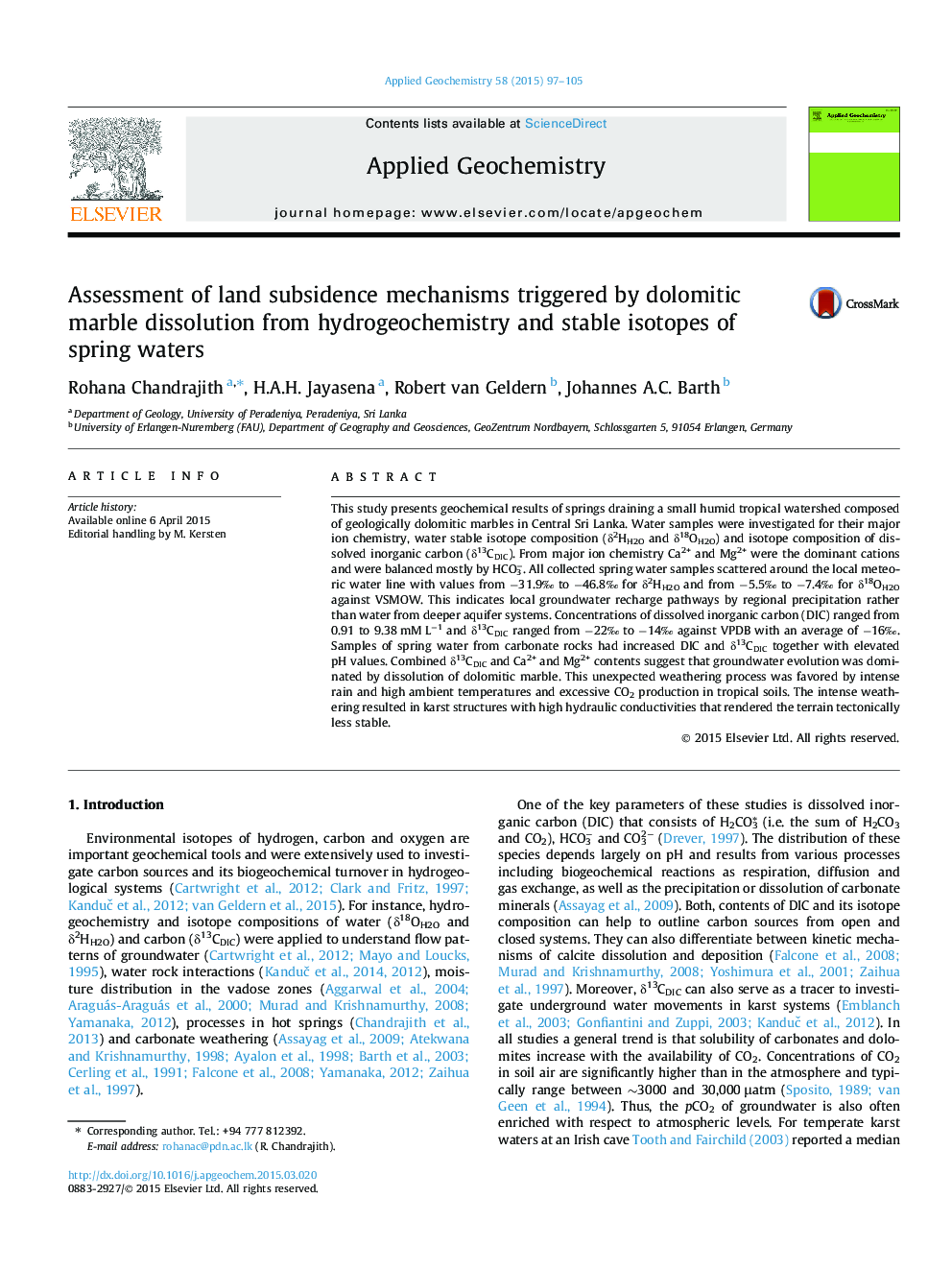| Article ID | Journal | Published Year | Pages | File Type |
|---|---|---|---|---|
| 4435657 | Applied Geochemistry | 2015 | 9 Pages |
•Carbon stable isotopes of DIC revealed enhanced weathering of dolomites.•Intense weathering of dolomite is potentially responsible for land subsidence.•Water stable isotopes indicate spring water recharge by local precipitation.
This study presents geochemical results of springs draining a small humid tropical watershed composed of geologically dolomitic marbles in Central Sri Lanka. Water samples were investigated for their major ion chemistry, water stable isotope composition (δ2HH2O and δ18OH2O) and isotope composition of dissolved inorganic carbon (δ13CDIC). From major ion chemistry Ca2+ and Mg2+ were the dominant cations and were balanced mostly by HCO3−. All collected spring water samples scattered around the local meteoric water line with values from −31.9‰ to −46.8‰ for δ2HH2O and from −5.5‰ to −7.4‰ for δ18OH2O against VSMOW. This indicates local groundwater recharge pathways by regional precipitation rather than water from deeper aquifer systems. Concentrations of dissolved inorganic carbon (DIC) ranged from 0.91 to 9.38 mM L−1 and δ13CDIC ranged from −22‰ to −14‰ against VPDB with an average of −16‰. Samples of spring water from carbonate rocks had increased DIC and δ13CDIC together with elevated pH values. Combined δ13CDIC and Ca2+ and Mg2+ contents suggest that groundwater evolution was dominated by dissolution of dolomitic marble. This unexpected weathering process was favored by intense rain and high ambient temperatures and excessive CO2 production in tropical soils. The intense weathering resulted in karst structures with high hydraulic conductivities that rendered the terrain tectonically less stable.
